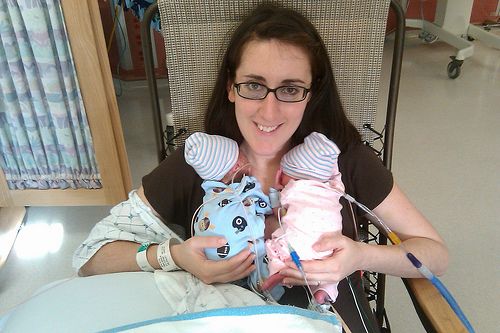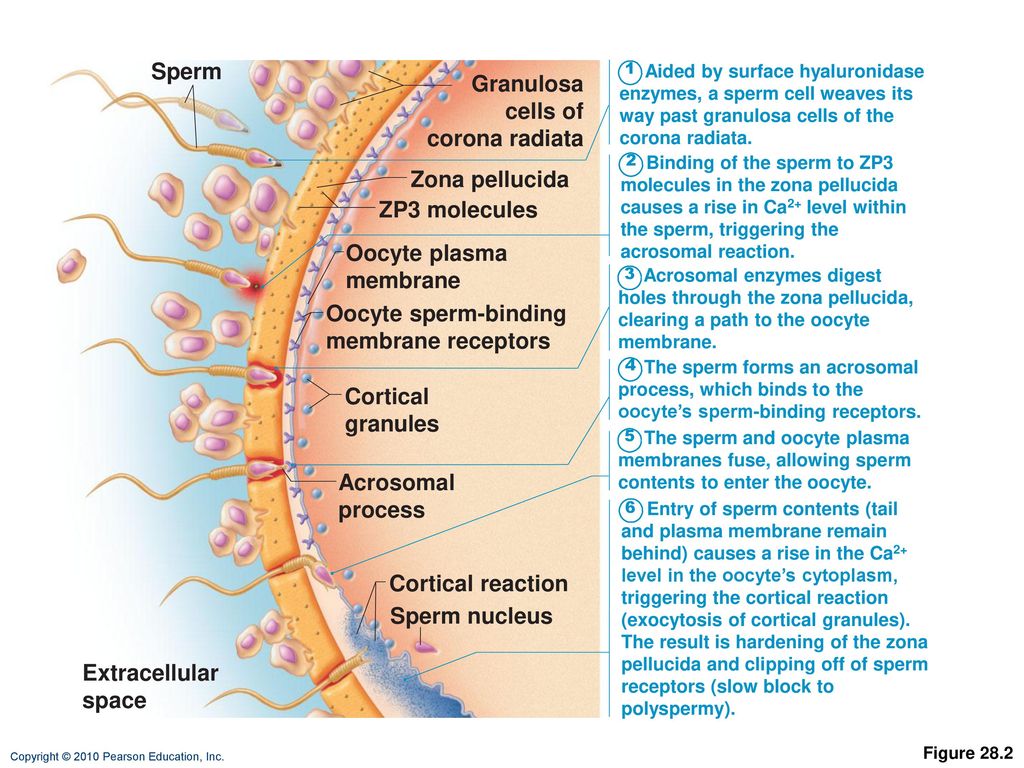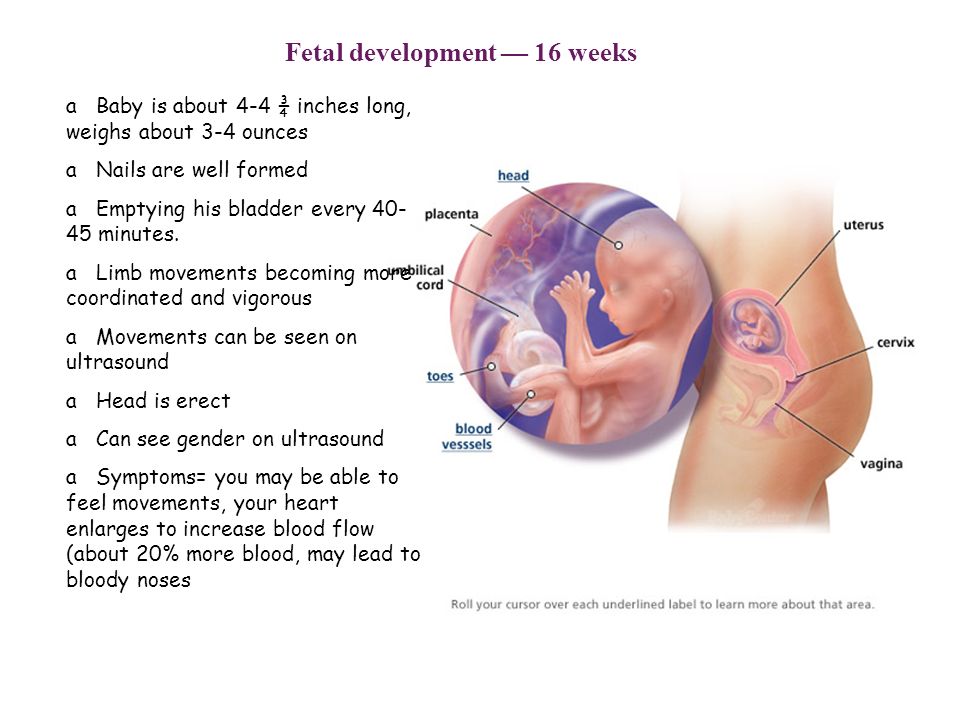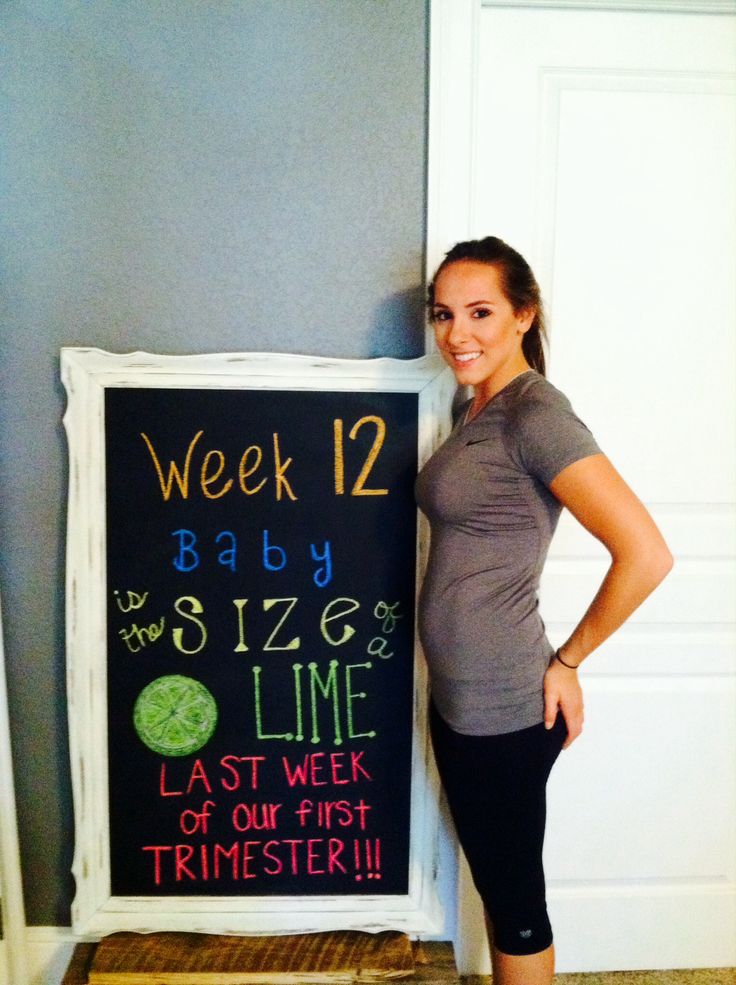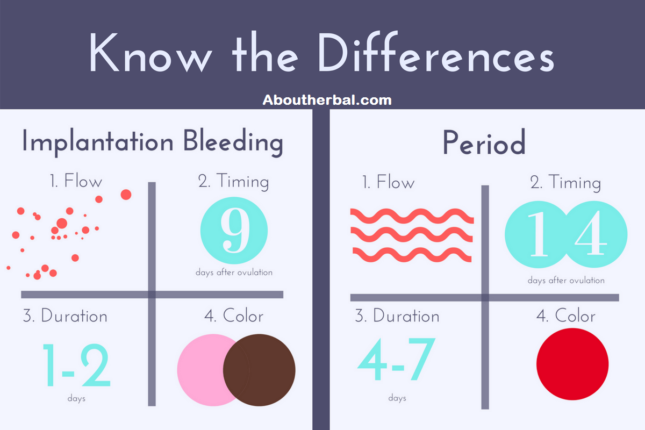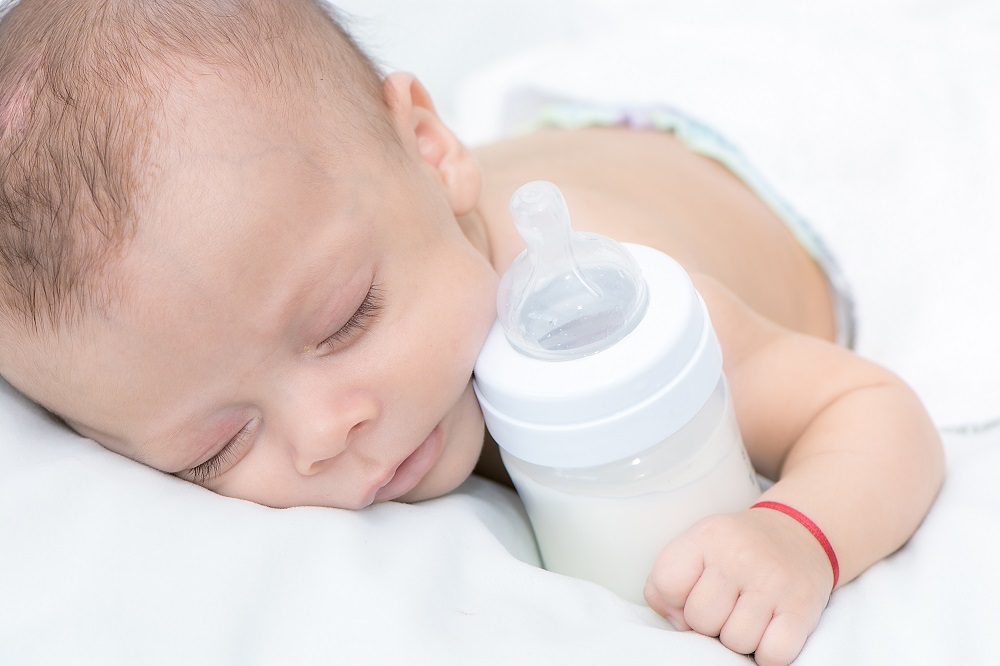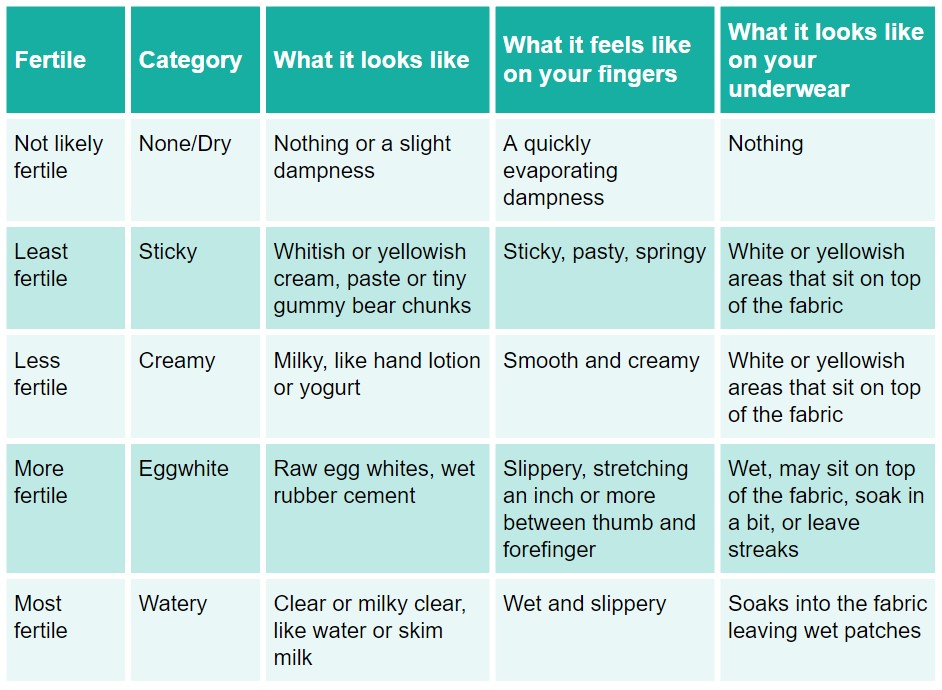Go into labor at 38 weeks
How to induce labor naturally
Around 38 weeks into their pregnancies, I start to see a shift in my expecting patients. The excitement of being pregnant has worn off. They are sore, uncomfortable and often feeling a great deal of pregnancy fatigue.
This is also usually when I start getting questions about natural ways to induce labor.
“Is it true that eating spicy food will get things going?” “Does drinking castor oil really work?”
Some of my expecting moms are willing to try just about anything at this point, and the internet provides endless ideas. However, I always caution that very few methods have been proven effective in getting labor started. And some methods can actually be dangerous for both mom and baby.
Here are six natural ways to induce labor that I get questions about from my patients, and the advice I share with them. I recommend that you first get your doctor’s permission before trying any of these methods as a way to induce labor.
1.
Walking and exercise often make it to the top of the list of things to try. While there’s no research that says it will induce labor, 30 minutes of moderate exercise at least five times a week can be helpful in any stage of pregnancy. And, it’s safe to use a birthing or exercise ball to stretch and help relieve some of the pressure in your pelvis, hips and back (unless you’ve been instructed otherwise by your doctor). Staying fit can help improve sleep and your mood. It can also decrease your risk of cesarean delivery and gestational diabetes.
2. Spicy foods
Spicy foods can make you sweat, but they won’t induce labor. That’s an old wives’ tale. Research has shown that eating spicy food can trigger heartburn and indigestion, but as for labor, there has been no documented research to prove this theory.
3. Sexual intercourse
You might be wondering “How would sex induce labor?” For starters, it can release oxytocin from the brain – the same chemical that causes contractions. And it can also release prostaglandins, which help the cervix naturally soften and prepare for labor. Be sure to ask your doctor whether you have the go-ahead to give sex at this time a try. If you’re given the okay, it’s certainly one of the more fun ways to try and get labor going.
And it can also release prostaglandins, which help the cervix naturally soften and prepare for labor. Be sure to ask your doctor whether you have the go-ahead to give sex at this time a try. If you’re given the okay, it’s certainly one of the more fun ways to try and get labor going.
4. Acupuncture and acupressure
Using acupuncture, acupressure or massage to induce labor is somewhat controversial. The belief is that stimulating certain pressure points in the body can release oxytocin and induce labor. While the effectiveness of this method is still up for debate, a foot massage is still enjoyable, especially at the end of pregnancy. And massage therapy can help treat the hip, back, ligament and musculoskeletal pain you might feel while pregnant. Both are very safe as long as the care professional has experience in taking care of pregnant women. Here at Park Nicollet, we’re lucky to have massage therapists specifically trained to work with pregnant women and their much more loose and relaxed muscles and joints.
5. Nipple stimulation to induce labor – discouraged
Some of my patients ask me whether using a breast pump can help start labor. Similar to sex, nipple stimulation can lead to oxytocin release. However, there is no research that shows using a breast pump to induce labor is safe or effective, so I discourage my patients from trying this method.
6. Castor oil to induce labor – highly discouraged and potentially dangerous
Castor oil can cause uterine contractions. But, the contractions may or may not be labor. The theory is that castor oil stimulates the bowels, which irritates the uterus and causes contractions. This can lead to side effects like diarrhea, nausea and vomiting – all of which can lead to dehydration. I highly discourage my patients from trying this method.
Be patient, and remember these methods for later
At the end of the day, your baby will come when they are ready. But once you’re in labor, some of the things listed above may actually help it progress. Walking, acupuncture, massage and more can also be used as natural ways to manage labor and delivery pains.
Walking, acupuncture, massage and more can also be used as natural ways to manage labor and delivery pains.
Until then, try to stay comfortable and be patient. And know that, if needed, your doctor can help you get your labor started safely and effectively.
Pregnancy at week 38 | Pregnancy Birth and Baby
Pregnancy at week 38 | Pregnancy Birth and Baby beginning of content4-minute read
Listen
Your baby
Your baby is now ready to be born. They weigh about 3.2kg and measure about 35cm from head to bottom. They may still have some lanugo – fine hair – on their body, but it has mostly disappeared. They are probably covered in vernix, a white, creamy film that protects their skin from amniotic fluid.
The meconium inside your baby’s bowel can sometimes be released during labour. If this happens, it would turn the amniotic fluid green. Your baby would then need to be monitored closely since it could be a sign they are in distress.
If this happens, it would turn the amniotic fluid green. Your baby would then need to be monitored closely since it could be a sign they are in distress.
Your baby at 38 weeks
| Length: | 35cm (head to bottom) |
| Weight: | 3.2kg |
Your body
You could go into labour at any time between now and 42 weeks. You might notice the very early signs of labour, which include pressure in your pelvis, cramps or tightening like period pains, backache or diarrhoea. You might have a ‘show’ – when a plug of mucus comes out of your vagina – or your waters might break, either as a trickle or a gush.
You will know if you are in labour when you have strong, regular contractions that last for at least a minute each.
You are probably feeling tired and uncomfortable, but some women get a burst of energy in the last few weeks of pregnancy. You may feel like you need to prepare the house for the baby. Just be careful not to exert yourself physically.
Just be careful not to exert yourself physically.
Things to remember
Every labour is different. Often, labour is very slow and can take hours or days. But sometimes, things can move very quickly.
It’s a good idea to have a plan in place for what to do when labour starts. Your doctor or midwife will have discussed with you when to go to the hospital. It’s a good idea to give the hospital a call when you go into labour.
Make sure you know how you will get to hospital when the time comes. Do not drive yourself. If for some reason you can’t contact your partner or support person, make sure you have another way of getting there.
Read next
Your pregnancy at 39 weeks
Learn about your pregnancy journey and what is happening to you and your baby.
Speak to a maternal child health nurse
Call Pregnancy, Birth and Baby to speak to a maternal child health nurse on 1800 882 436 or video call. Available 7am to midnight (AET), 7 days a week.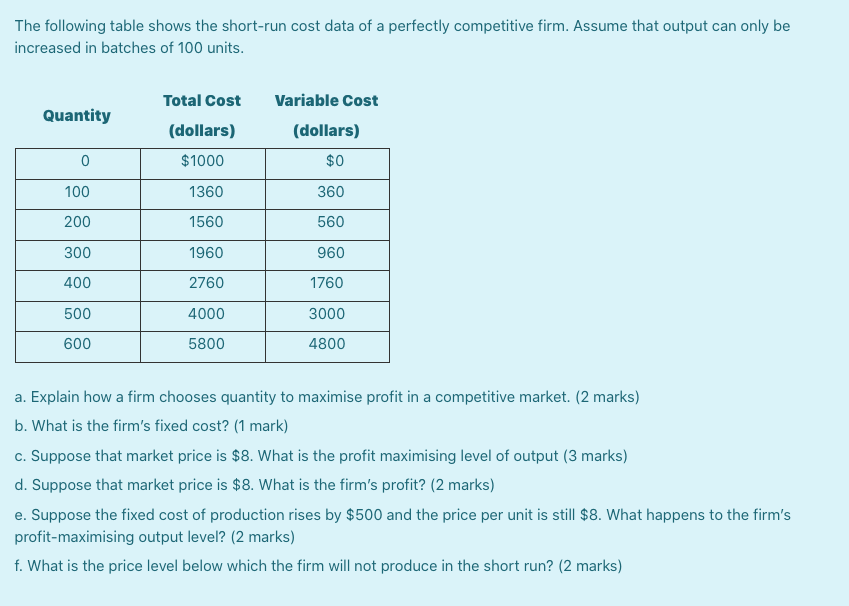
Sources:
Raising Children Network (Pregnancy week-by-week), NSW Health (Having a baby), Raising Children Network (Birth: an overview), NHS (You and your baby at 38 weeks pregnant)Learn more here about the development and quality assurance of healthdirect content.
Last reviewed: August 2020
Back To Top
Need more information?
38 weeks pregnant | Raising Children Network
38 weeks pregnant? In this pregnancy week by week guide, find out how your baby is growing, how your body is changing and how to look after yourself.
Read more on raisingchildren.net.au website
Early signs of pregnancy
For women who have a regular menstrual cycle, the earliest and most reliable sign of pregnancy is a missed period. Read about some of the other early pregnancy signs and symptoms.
Read about some of the other early pregnancy signs and symptoms.
Read more on Pregnancy, Birth & Baby website
Pregnant with twins? About twin pregnancy | Raising Children Network
Pregnant with twins? Twin pregnancy can have more complications, so you’ll need more check-ups. Here’s what to expect in your pregnancy and antenatal care.
Read more on raisingchildren.net.au website
Twins and multiple births - Better Health Channel
Multiple births are more common than they used to be, due to the increased use of assisted reproductive techniques, in particular the use of fertility drugs.
Read more on Better Health Channel website
Pregnancy at week 37
By the end of week 37, your baby is considered full-term. You'll probably be very tired because of the extra weight so try and get as much rest as you can.
You'll probably be very tired because of the extra weight so try and get as much rest as you can.
Read more on Pregnancy, Birth & Baby website
Glossary of pregnancy and labour
Glossary of common terms and abbreviations used in pregnancy and labour.
Read more on Pregnancy, Birth & Baby website
Giving birth to twins
Twins are more likely to be born early, often before 38 weeks, so it's important to understand your birth options.
Read more on Pregnancy, Birth & Baby website
Pregnancy - week by week - Better Health Channel
Pregnancy is counted as 40 weeks, starting from the first day of the mother's last menstrual period.
Read more on Better Health Channel website
Pregnancy: blood tests, ultrasound & more | Raising Children Network
In pregnancy, you’ll be offered blood tests, ultrasound scans, urine tests and the GBS test. Pregnancy tests identify health concerns for you and your baby.
Read more on raisingchildren.net.au website
Baby due date - Better Health Channel
Pregnancy is calculated from the first day of your last period, not from the date of conception.
Read more on Better Health Channel website
Disclaimer
Pregnancy, Birth and Baby is not responsible for the content and advertising on the external website you are now entering.
Need further advice or guidance from our maternal child health nurses?
1800 882 436
Video call
- Contact us
- About us
- A-Z topics
- Symptom Checker
- Service Finder
- Linking to us
- Information partners
- Terms of use
- Privacy
Pregnancy, Birth and Baby is funded by the Australian Government and operated by Healthdirect Australia.
Pregnancy, Birth and Baby is provided on behalf of the Department of Health
Pregnancy, Birth and Baby’s information and advice are developed and managed within a rigorous clinical governance framework. This website is certified by the Health On The Net (HON) foundation, the standard for trustworthy health information.
This site is protected by reCAPTCHA and the Google Privacy Policy and Terms of Service apply.
This information is for your general information and use only and is not intended to be used as medical advice and should not be used to diagnose, treat, cure or prevent any medical condition, nor should it be used for therapeutic purposes.
The information is not a substitute for independent professional advice and should not be used as an alternative to professional health care. If you have a particular medical problem, please consult a healthcare professional.
Except as permitted under the Copyright Act 1968, this publication or any part of it may not be reproduced, altered, adapted, stored and/or distributed in any form or by any means without the prior written permission of Healthdirect Australia.
Support this browser is being discontinued for Pregnancy, Birth and Baby
Support for this browser is being discontinued for this site
- Internet Explorer 11 and lower
We currently support Microsoft Edge, Chrome, Firefox and Safari. For more information, please visit the links below:
For more information, please visit the links below:
- Chrome by Google
- Firefox by Mozilla
- Microsoft Edge
- Safari by Apple
You are welcome to continue browsing this site with this browser. Some features, tools or interaction may not work correctly.
harbingers of childbirth in multiparous and primiparas, what happens, fetal movement, baby's weight, ultrasound
What happens to the baby at this time?
Now the weight of the child is 3000-3200 g. Sometimes the mother can feel in the abdomen not only the fetal movement, but also rhythmic tremors - this is the child hiccups, swallowing amniotic fluid. It is believed that hiccups are a kind of training before the start of spontaneous breathing. By this time, the baby has already taken its final position in the uterine cavity - head down, towards the exit from the uterus. The obstetrician determines the presentation of the fetus by probing the abdomen of the expectant mother. But sometimes doctors detect breech presentation, in this case, an examination is performed, ultrasound is performed and the tactics of childbirth are determined.
But sometimes doctors detect breech presentation, in this case, an examination is performed, ultrasound is performed and the tactics of childbirth are determined.
Index
Norm
Mother's weight gain
From 8.6 (with initial overweight) to 14.5 kg (with initial weight deficit), average gain 10-12 kg
Fundal height005
35-38 cm
Fetal weight
3000-3200 g
Fetal height
48-52 cm
Important!
During the 38th week of pregnancy, the expectant mother's body is actively preparing for the upcoming birth. It is important to know in advance, read the necessary information about this process (if you have not already done so) in order to clarify how to behave with the onset of contractions.
The first harbingers of childbirth appear in multiparous and primiparas. These are body changes, certain processes that set up the body and reproductive system for the birth of a child. The signs differ slightly depending on whether the mother is expecting her first baby or if this is her second and subsequent pregnancies.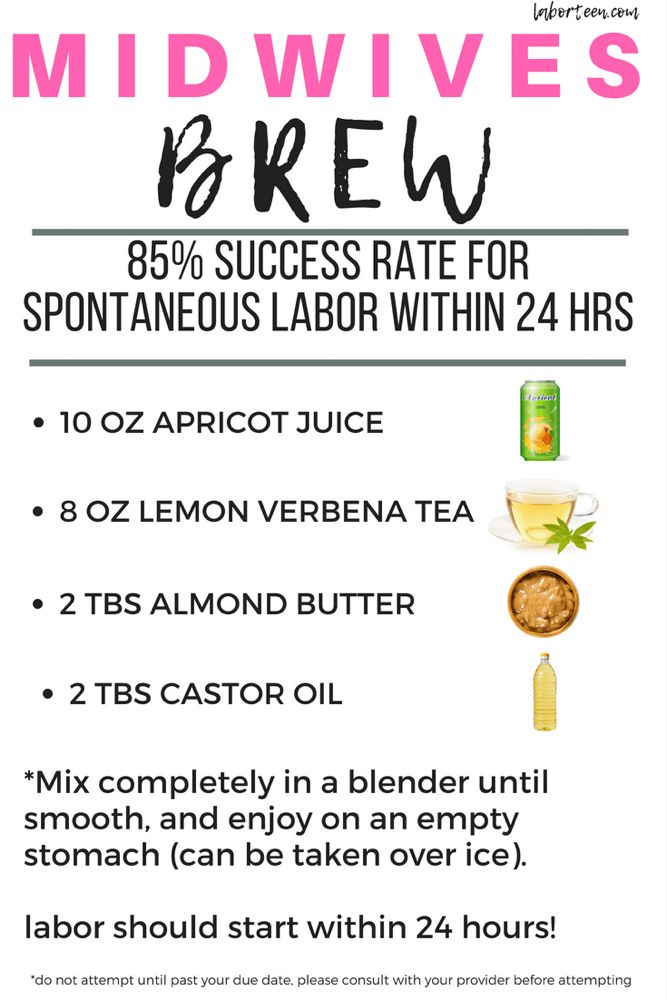
Many mothers are afraid to miss or not recognize these important "calls". Don't worry about that - we've put together a handy labor checklist to help you figure out when it's time to go to the hospital.
During this period, drops of a yellowish-whitish liquid - colostrum - can periodically be released from the nipples of the breast. So the mammary glands prepare for childbirth and subsequent feeding of the baby. In order not to stain the linen, you can use special absorbent pads for the chest. They are sold in pharmacies and children's stores, they are a small circle of absorbent materials that is inserted into a bra. If colostrum is absent, this is not a sign of pathology. In some women, the work of the mammary glands starts only after the birth of the crumbs.
Harbingers of childbirth in women expecting their first child
One of the first signs that childbirth is imminent is breathing easier due to the fact that the stomach has drooped. This feeling is not always so vivid that the pregnant woman herself notices it, sometimes others focus on it. Although the child is also actively moving, the mother's shortness of breath decreases, breathing becomes easier, heartburn and mild nausea after eating less often occur or completely disappear. But due to the fact that the fetal head sank lower into the small pelvis, the uterus is increasingly in good shape, urination becomes more frequent due to pressure on the bladder.
Although the child is also actively moving, the mother's shortness of breath decreases, breathing becomes easier, heartburn and mild nausea after eating less often occur or completely disappear. But due to the fact that the fetal head sank lower into the small pelvis, the uterus is increasingly in good shape, urination becomes more frequent due to pressure on the bladder.
Sometimes the expectant mother suddenly notices that the child is not moving much, his movements are not so sharp and active, he seems to calm down. This is a completely natural process, since every day there is less and less space inside the uterine cavity, the walls of its temporary “house” put more and more pressure on the arms and legs, tightly cover, and the amniotic fluid becomes a little less.
If the baby began to move less, he is also preparing for childbirth, gaining strength, but if for 10-12 hours you have not felt a single push or movement, it is better to consult a doctor. He will check if everything is fine with the baby.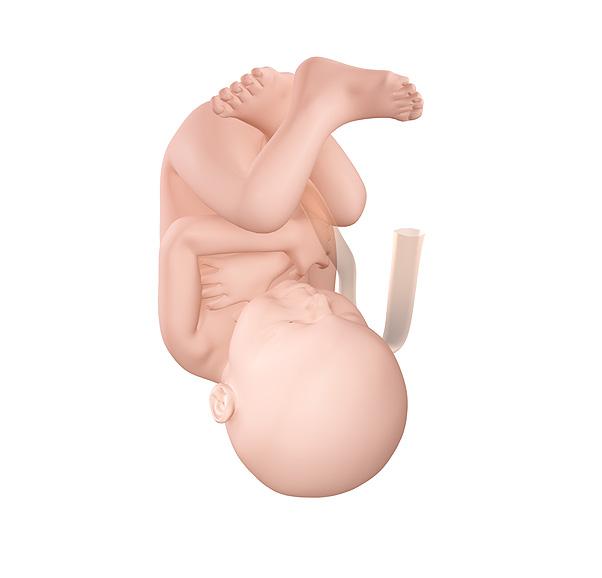
Important!
If the mother feels the fetal movement is too active, a doctor's consultation is necessary. This is necessary to make sure that the baby does not have oxygen starvation, and the volume of amniotic fluid is normal.
If in earlier periods fetal movements were felt as various movements, pushes, kicks and even somersaults, then by this time it is more and more often pandiculation or slight movements. The baby already has little space, sometimes his movements are very noticeable - the woman notes that she is pulling her stomach in the area where the fetal activity is felt.
Preparing the body for childbirth
The 38th week of pregnancy is a period of active restructuring of the body. Under the influence of hormones, the body prepares for hard work: there is pain in the lower back, pulling the lower abdomen, there is an ache in the area of the pubic joint (the place where the pelvic bones are closed). The lower abdomen hurts due to the descent of the fetal head and its tight fit to the pelvic bones, the occurrence of more and more frequent training uterine contractions and the gradual loosening of the ligaments. Sometimes there is a feeling that the stomach is turning to stone - this is the tone of the uterus, muscle training for subsequent contractions. If these contractions are irregular, occur occasionally, they are not intense, you just need to lie on your side, rest, and they pass. If the same time passes between contractions, they become more and more sensitive, the interval is reduced - this is the beginning of labor, it's time to go to the maternity hospital.
Sometimes there is a feeling that the stomach is turning to stone - this is the tone of the uterus, muscle training for subsequent contractions. If these contractions are irregular, occur occasionally, they are not intense, you just need to lie on your side, rest, and they pass. If the same time passes between contractions, they become more and more sensitive, the interval is reduced - this is the beginning of labor, it's time to go to the maternity hospital.
There is one easy way to tell if contractions are false or true. You just need to count the number of contractions and the interval between them. Use a stopwatch on your smartphone, noting how long the contraction of the uterus lasts and how long the period of relaxation, rest, will then be. If the contractions of the uterus gradually increase, intensify, and the time intervals between them gradually decrease, this is a sign of the onset of labor. Then it was time to go to the maternity hospital.
Mucous discharge from the genital tract may occur during the 38th week.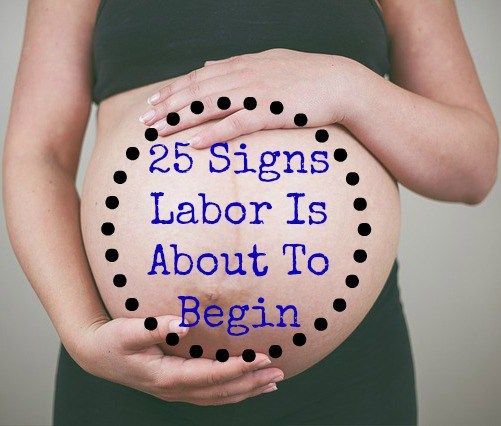 By the nature of the discharge, they look like lumps of dense transparent or whitish mucus with streaks of blood without any smell. This is the discharge of the mucous plug, which closed the cervix and prevented the penetration of pathogenic bacteria to the fetal membranes. The cervix gradually softens, opens slightly and the mucus gradually leaves.
By the nature of the discharge, they look like lumps of dense transparent or whitish mucus with streaks of blood without any smell. This is the discharge of the mucous plug, which closed the cervix and prevented the penetration of pathogenic bacteria to the fetal membranes. The cervix gradually softens, opens slightly and the mucus gradually leaves.
Good to know
In nulliparous women, harbingers of imminent labor may appear approximately one to two weeks before the onset of labor. It's about 38 or 39th weeks of pregnancy.
In some cases, the mother-to-be may have loose stools at 38 weeks of gestation, although no change in the woman's diet has occurred. This is an acceptable bowel reaction to changing hormone levels and preparing the body for childbirth. The intestines are gradually cleared of the contents. However, not always different sensations and changes in the work of digestion are explained precisely by prenatal changes. Diarrhea at this gestational age may also be the result of dietary errors, food poisoning, or other influences.
A particularly alarming situation is when nausea and even vomiting occur against the background of diarrhea. In this case, you should immediately consult a doctor.
Harbingers of childbirth while expecting a second and subsequent children
If this is not the first pregnancy and childbirth for a woman, and the family is expecting a second, third baby, then the birth may come a little earlier. The body already knows what will happen and it takes less time for the preparatory phase. Thus, the appearance of the crumbs into the world can be expected in the period from the beginning of the 38th week of pregnancy. The processes themselves, which are associated with the preparation for childbirth, may not be so pronounced, sometimes they are absent or appear just a couple of days before the baby is born.
So, with repeated pregnancy, there may not be a pronounced and significant lowering of the abdomen. Often, the baby is initially located lower than during the first pregnancy, or the cervix relaxes just before the onset of childbirth. Then the woman feels that it has become easier to breathe, the pressure on the bladder has increased.
Then the woman feels that it has become easier to breathe, the pressure on the bladder has increased.
Important!
It is worth emphasizing that in multiparous mothers, the harbingers of childbirth may be completely absent. The birth process can begin suddenly, and the contractions will be stronger, the duration of labor will be shorter. Therefore, by the time of 38 weeks, you need to collect everything you need to go to the maternity hospital, all the necessary things and documents should be in an accessible place.
Childbirth is unique, it takes place differently in women, and even in the same woman childbirth is different. If this is the third birth or the fourth, often the precursors can be barely perceptible or completely absent. And the birth act itself proceeds quite quickly and sometimes even a little earlier than the date of birth, which is determined by the doctor. But, as for the second birth, this fact is not a strict pattern, childbirth is possible almost the same day with a pre-calculated date.
In any case, by the 38th week of pregnancy, it is necessary to collect everything necessary for a trip to the maternity hospital and, at the first contractions, immediately seek medical help.
Is it worth it to speed up labor at this time?
Many women feel tired towards the end of their pregnancy and want to have a baby as soon as possible. Therefore, they ask one question - how to speed up the onset of childbirth, is it possible to stimulate this process in order to meet the baby faster and return home, accept congratulations and raise the baby. But you don't need to think about inducing labor before the full term of 40 weeks. Although by the 38th week the baby is already full-term, he is still gaining weight, continues to develop, and nature knows better when he needs to be born.
- 1. Normal pregnancy (clinical recommendations) // Obstetrics and Gynecology: News. Opinions. Learning. 2020. No. 4 (30).
- 2. Burkitova A.M., Prokhorova V.
 S., Bolotskikh V.M. Actual diagnostic and clinical problems in post-term pregnancy in modern obstetrics // Journal of Obstetrics and Women's Diseases. - 2017. - T. 66. - No. 2. - C. 93-103. doi: 10.17816/JOWD66293-103
S., Bolotskikh V.M. Actual diagnostic and clinical problems in post-term pregnancy in modern obstetrics // Journal of Obstetrics and Women's Diseases. - 2017. - T. 66. - No. 2. - C. 93-103. doi: 10.17816/JOWD66293-103 - 3. Obstetrics: national guidelines / ed. G.M. Savelyeva, G. T. Sukhikh, V.N. Serova, V.E. Radzinsky. 2nd ed. Moscow: GEOTAR-Media
- Pediatrician
- Pathophysiology, immunology, pediatric and adult nutrition
- Completed the course on HB from WHO/UNICEF, taught at the Volgograd State Medical University, Department of Pathophysiology with a course of immunology, allergology
Others articles by the author
37-40 weeks of pregnancy
37th week of pregnancy for a baby
At 37 weeks of gestation, the baby is approximately 48 cm tall and weighs 2,600 g. all facial features are developed, cartilaginous tissues are pronounced. The accumulation of subcutaneous fat at this stage of pregnancy makes the outline of the body softer and more rounded. The skin of the child is gradually smoothed out, it is no longer as pink as in the previous weeks of intrauterine development, the integument gradually brightens. The body of the baby is still abundantly covered with grease, but the amount of fluff is noticeably reduced, fluff hair remains only on the shoulders and back, in some babies they disappear almost completely.
The skin of the child is gradually smoothed out, it is no longer as pink as in the previous weeks of intrauterine development, the integument gradually brightens. The body of the baby is still abundantly covered with grease, but the amount of fluff is noticeably reduced, fluff hair remains only on the shoulders and back, in some babies they disappear almost completely.
Fat accumulation continues this week. It reaches a maximum of 15% of the total body weight of the child. It is difficult to overestimate the importance of adipose tissue for newborns, it is it that protects the child from overheating or hypothermia, since the baby's thermoregulation system after childbirth is still not sufficiently formed and continues to develop in the first months of a small person's life.
At this time, not only the volume of subcutaneous fat increases, but muscles and skeleton also develop intensively. The child constantly moves arms and legs. These unique workouts help increase muscle mass. Also, the baby makes rhythmic respiratory movements that strengthen the intercostal muscles and the diaphragm, and prepare the respiratory organs for childbirth.
Also, the baby makes rhythmic respiratory movements that strengthen the intercostal muscles and the diaphragm, and prepare the respiratory organs for childbirth.
Pregnant woman at 37 weeks
As the due date approaches, pregnant women begin to notice the appearance of their precursors, that is, certain signs, changes that occur under the influence of hormones. The body of a woman is preparing to give birth to a child, progesterone gives way to the dominant role of the birth hormone estrogen, the state of health of a pregnant woman changes.
From the 37th week expectant mothers can observe the following changes:
- slight weight loss;
- reduction in abdominal volume;
- the appearance of training or "false" contractions and the increase in their intensity;
- discharge of mucus from the cervix.
The nature of the stool changes, it becomes looser, aching pains in the lower back of varying intensity may appear, the bottom of the uterus descends. A woman notes some signs on her own, others are observed by a gynecologist during a routine examination.
A woman notes some signs on her own, others are observed by a gynecologist during a routine examination.
Harbingers do not appear in all women. Some expectant mothers notice only some of the above symptoms, while others observe signs of an impending birth not two or three weeks before their date, but just a few hours. Both the appearance of precursors at the 37th week and their absence are a variant of the norm and depend on the individual characteristics of the woman's body.
This week the woman's body is intensified preparation for the birth of a child. If the fetus is located correctly, head down, it gradually descends, goes to the lower part of the uterus, presses to the body and bends the limbs, intuitively taking the most comfortable position for passing the birth canal. The consequence of the movement of the fetus is the omission of the bottom of the uterus. The abdomen drops, the pressure on the diaphragm significantly decreases, the pregnant woman can breathe easily, the shortness of breath that haunted her in previous weeks disappears. The pressure on the stomach also decreases, heartburn disappears, a feeling of heaviness after eating and other unpleasant sensations. Moving the baby can put pressure on the bowels and bladder. A pregnant woman at this time often experiences the urge to urinate, may suffer from frequent loose stools. The reason for frequent bowel movements is not only the mechanical effect of the uterus on it, but also an increase in the content of estrogens in the body, hormones that contribute to the excretion of fluid. At the 37th week, the expectant mother can empty her intestines up to 3-4 times a day and at the same time observe a significant liquefaction of feces.
The pressure on the stomach also decreases, heartburn disappears, a feeling of heaviness after eating and other unpleasant sensations. Moving the baby can put pressure on the bowels and bladder. A pregnant woman at this time often experiences the urge to urinate, may suffer from frequent loose stools. The reason for frequent bowel movements is not only the mechanical effect of the uterus on it, but also an increase in the content of estrogens in the body, hormones that contribute to the excretion of fluid. At the 37th week, the expectant mother can empty her intestines up to 3-4 times a day and at the same time observe a significant liquefaction of feces.
38th week of pregnancy: the development of the future baby
At the 38th week, the fetus is fully formed, so childbirth at this time is no longer dangerous for both the mother and the baby. The weight of the fetus is about 3 kg, but this indicator can vary significantly for different babies, the weight depends on the individual characteristics of the mother and child, the structural features of the body and other factors. The body length of a newborn is approximately 50 cm.
The body length of a newborn is approximately 50 cm.
All organs and systems at 38 weeks of age are characterized by physiological and morphological maturity, they are fully ready for work. At this time, the child prepares for childbirth, makes respiratory movements and prepares the intercostal muscles for breathing. The tissues of the lungs are bathed in amniotic fluid, which helps maintain the right level of surfactant that coats the baby's lungs from the inside. All elements of the respiratory system are ready for use. With the first breath after birth, the alveoli begin to transfer oxygen from the air to the blood, gas exchange occurs, the respiratory and circulatory systems begin to work intensively.
Pregnant woman
The body of a pregnant woman continues to actively prepare for the birth of a baby, the estrogen content rapidly increases, and the progesterone level decreases significantly. A change in the hormonal background contributes to the softening of the tissues of the birth canal and cervix. Throughout pregnancy, the lumen of the cervical canal is closed by a plug of thick mucus, which protects the baby from infection, and the uterine cavity protects against the penetration of microorganisms dangerous to health. In the last weeks of pregnancy, the consistency of the mucus changes, it becomes more liquid and begins to gradually flow out. In some women, mucus leaves gradually, while in other women in labor at the same time. The discharge resembles colorless egg white in its consistency and appearance. Sometimes the mucus is colored pinkish, brown or yellow. The discharge of the cork is painless, a woman may experience a slight feeling of discomfort in the lower abdomen. More abundant vaginal discharge than during the entire pregnancy can signal the passage of the cork.
Throughout pregnancy, the lumen of the cervical canal is closed by a plug of thick mucus, which protects the baby from infection, and the uterine cavity protects against the penetration of microorganisms dangerous to health. In the last weeks of pregnancy, the consistency of the mucus changes, it becomes more liquid and begins to gradually flow out. In some women, mucus leaves gradually, while in other women in labor at the same time. The discharge resembles colorless egg white in its consistency and appearance. Sometimes the mucus is colored pinkish, brown or yellow. The discharge of the cork is painless, a woman may experience a slight feeling of discomfort in the lower abdomen. More abundant vaginal discharge than during the entire pregnancy can signal the passage of the cork.
A woman should carefully monitor the color and volume of discharge, since too much colorless discharge may indicate not only the cork has come off, but also be one of the symptoms of amniotic fluid leakage.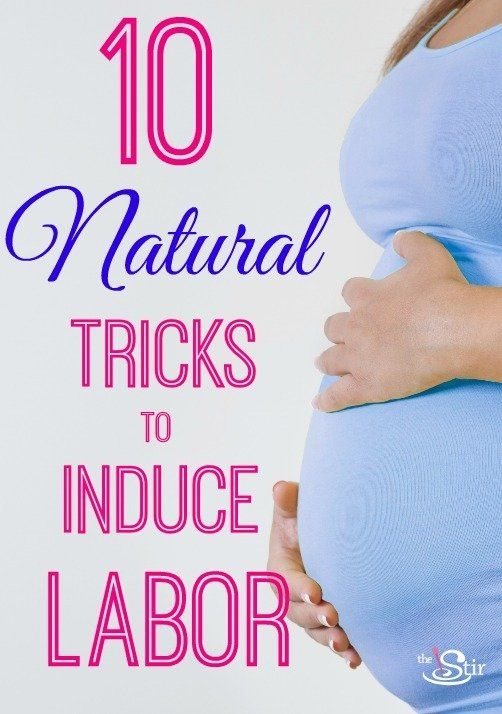 Indicator pads and amnio tests or test strips will help determine the cause of the discharge. Pads are sold in many pharmacies and can be easily used at home. If amniotic fluid leakage is confirmed, you should immediately consult a doctor.
Indicator pads and amnio tests or test strips will help determine the cause of the discharge. Pads are sold in many pharmacies and can be easily used at home. If amniotic fluid leakage is confirmed, you should immediately consult a doctor.
After the mucus plug has passed, you should stop visiting the pool and swimming in open water, as the risk of infection of the child increases significantly. It is also necessary to exclude sexual contact.
39th week of pregnancy: what happens to the fetus?
At 39 weeks, the baby weighs 3100-3500 g and is 50-52 cm tall. Height and weight are very relative and can vary significantly. The baby is rapidly preparing for the most important test of his life - birth, which requires endurance and considerable effort. During this period of pregnancy, the size and weight of the child's adrenal glands, that is, the glands of the endocrine system, which are responsible for the reaction of the human body to stress factors, increase. It is the hormones adrenaline and norepinephrine produced by the adrenal glands that help the child quickly adapt to new temperature conditions, tactile, sound and light impulses.
All the senses of the baby are developed at 39 weeks. Within a few moments after birth, the baby can focus his eyes, he reacts to bright light and moving objects, many scientists claim that newborns distinguish colors, see the faces of parents and doctors. The hearing of the baby in the last weeks of fetal life is also fully developed; after birth, he reacts to loud sounds and noise. A newborn baby is able to determine the main shades of taste, recognize sour, bitter, sweet and salty.
In the womb, the baby is in an aquatic environment that minimizes contact. Immediately after birth, the baby experiences many tactile sensations, unlike intrauterine life, he feels the touch of his mother's hands and diapers, towels, dressings and other materials. Babies especially like the touch of skin to skin, so in a modern maternity hospital, newborns must be laid out on their mother's stomach even before cutting the umbilical cord. The child adapts to the new environment more easily, feels protected. Laying out a child has not only a psychological aspect, since it contributes to the colonization of microorganisms from the mother's skin to the skin and mucous membranes of the baby, and increases its immunity.
Laying out a child has not only a psychological aspect, since it contributes to the colonization of microorganisms from the mother's skin to the skin and mucous membranes of the baby, and increases its immunity.
Pregnant woman
In the last weeks of pregnancy, the expectant mother strives to prepare her apartment or house as much as possible for the arrival of a new family member. Scientists call this sign of impending birth the nesting syndrome. Many women observe signs of the syndrome from the thirtieth week of pregnancy, however, nesting reaches its maximum point at the 39-40th week. Pregnant women tend to do general cleaning and repairs, re-paste the wallpaper and purchase a lot of new things that, in their opinion, are simply necessary in the house. After giving birth, many purchases are puzzling. The reason for this behavior is an increase in the level of adrenaline and norepinephrine in the body. These hormones are produced by the adrenal glands, they are necessary not only for the woman, but also for the baby to prepare for the upcoming birth.
40th week of pregnancy: how does the baby develop?
40 weeks - term pregnancy. The weight of a child who was born at such a period ranges from 2,600 g to 4,400 g, and his body length is 48-53 cm. These indicators are very arbitrary, since miniature babies weighing 2,600 g and real heroes are born at 40 weeks, whose body weight approaches 5,000 g. The length of the newborns can also vary from 45 to 55 cm.
Most women give birth exactly at 40 weeks. At this time, the baby is completely ready for birth, it meets all the parameters of a full-term baby. Before childbirth, the child closely presses the arms and legs to the body, bends the head as much as possible and presses against the exit from the uterus. This position allows you to make it possible to pass the birth canal with the narrowest part of the skull. In the course of labor, with each contraction, the child gradually moves down, he does not move in a straight line, but makes helical-translational movements, as if screwing into the mother's birth canal. During the progress of the newborn, the complete descent of his head, the cervix fully opens. This is followed by attempts, that is, contractions of the uterus, which advance the child through the birth canal. Gradually, the head of the baby is shown, and after it - his torso. Childbirth is a complex mechanism that is aimed not only at the safe passage of the birth canal by the child, protecting him from accidental injuries due to increased pressure, but also at preventing ruptures of the woman's soft tissues.
During the progress of the newborn, the complete descent of his head, the cervix fully opens. This is followed by attempts, that is, contractions of the uterus, which advance the child through the birth canal. Gradually, the head of the baby is shown, and after it - his torso. Childbirth is a complex mechanism that is aimed not only at the safe passage of the birth canal by the child, protecting him from accidental injuries due to increased pressure, but also at preventing ruptures of the woman's soft tissues.
Pregnant woman
The long wait for meeting her unborn child is coming to an end, and the 40th week of pregnancy is the last for most women. Every day, the anxiety of the expectant mother increases, a long wait affects the mood and well-being. Women strive to have a baby as soon as possible so that pregnancy and painful contractions are a thing of the past. Every pregnant woman dreams of meeting a baby, wants to hug him to her chest and stroke the delicate head.
Many women, especially primiparas, are afraid that labor will begin unnoticed, but such cases are extremely rare.